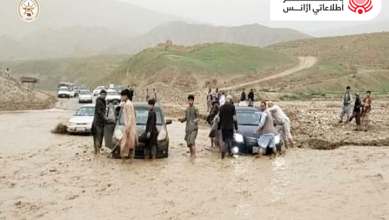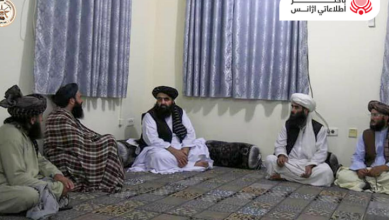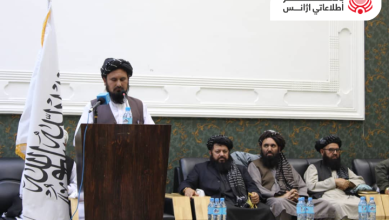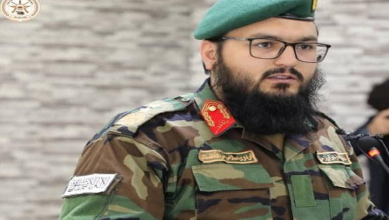
Friday February 09, 2018
Kabul (BNA) While the war in Afghanistan continues to fester unabated, one of the brighter spots in that ongoing conflict is the Afghan Air Force. The nascent air service is starting to mature and is starting to be able to employ airpower against its Taliban foe effectively using its own aircraft with the guidance of Western advisors. “One of the most important things I want to talk about is the Afghan Air Force growth,” Maj. Gen. James ‘Scorch’ Hecker, commander of the 9th Air and Space Expeditionary Task Force-Afghanistan and NATO Air Command-Afghanistan—also a F-22 Raptor pilot—told reporters at the Pentagon on Feb. 7. “It continues to grow in size and capability. While U.S. air power is destroying Taliban support elements in the deep fight, Afghan A-29s and MD-530 helicopters provide quick, lethal support to Afghan forces in the close fight.”
Indeed, the Afghan Air Force dropped the first bombs of a renewed campaign against the Taliban recently. “In fact, an A-29 Afghan aircraft dropped the first bomb of the air campaign on a drug lab and, I might add, shacked the target,” Hecker said. The centerpiece of Afghan air power are the Sierra Nevada/Embraer A-29 Super Tucano, the MD-530 light attack helicopter and some modified Cessna C208 Caravans—and their fleet is set to expand. “Right now, the Afghan Air Force has 12 A-29s, but that's going up to 25, more than double,” Hecker said. “Three A-29 pilots are now trained to drop laser-guided munitions. The first was dropped in training in December, so the Taliban can look forward to those laser-guided bombs raining on what used to be safe havens in the near future.”
The robust Caravans—which are turboprop utility aircraft—also play a significant role in the Afghan air force for airlift and combat operations. Eventually, the aircraft will also have an intelligence, surveillance and reconnaissance (ISR) mission. “The Afghans also have a fleet of 24 C208s that have added an air-drop capability,” Hecker said. “They added a roll-up door to the side of the airplane. They travel at 300 feet, 100 knots, and air-drop munitions or supplies out the door and hit their targets within 70 meters. This enables them to do air-drop rather than landing a Mi-17, which obviously reduces a risk in some regions.”
Eventually, the Afghans will receive a dedicated gunship variant of the Caravan. “In the future, the Afghan Air Force will also get what we call AC208s, and they'll get a total of 32 of them,” Hecker said. “These are similar to the C208, but this is an attack model, so it will carry pods with laser-guided rockets and a gun. It can also capture full-motion video and assist other aircraft to achieve precision targeting, making it an ISR asset, which is going to be key to enabling the A-29.”
The Afghans are also operating rotary-wing assets. “We've taken MD530 attack helicopters and transformed them into a very robust platform,” Hecker said. “For you folks in D.C., MD530s are small helicopters similar to those that report on the traffic jams on the Beltway you experience every day. The Afghans have 25 of these right now, and they're going to get five more each quarter until they have a total of 55 in about a year and a half. The biggest difference between the Afghan MD530s and those traffic helicopters is their ability to carry rockets and a gun. The Afghan National Army loves them. They have proven to be just the right platform to provide quick, lethal support to commandos and Afghan ground forces.”
Eventually, the Afghans will operate much more capable Lockheed Martin/Sikorsky UH-60 Blackhawk helicopters. “We recently delivered eight UH-60 Black Hawks to the Afghans over the last four months,” Hecker said. “They will eventually have a fleet of 159 of these. We are training 12 pilots, who have gone through their initial phase and are now preparing for mission qualification training. They will be ready for combat operations starting in May. After that, we'll get about 80 crews every 10 weeks, so by the end of the year we should have 28 pilots.”
Ultimately, the United States hopes to grow and shape the Afghan Air Force into a professional air arm. “This growth has already started but is going to continue,” Hecker said. “Eventually, we will almost triple the size of the Afghan Air Force. But this has to include more than an increase in quantity. We want to make sure the Afghan Air Force is both professional and capable.”
But to create a truly professional Afghan Air Force will take time and patience—and most importantly—proper training and discipline. “Pilots and maintenance teams are being trained in the United States, in Afghanistan and other partner nations,” Hecker said. “And this kind of training includes not just developing skills, but a mindset that prevents civilian casualties to the greatest extent possible. Several times, Afghan pilots on missions have resisted dropping their bombs to avoid civilian casualties. This isn't the case with the Taliban.”
Nationalinterest
Ansari




